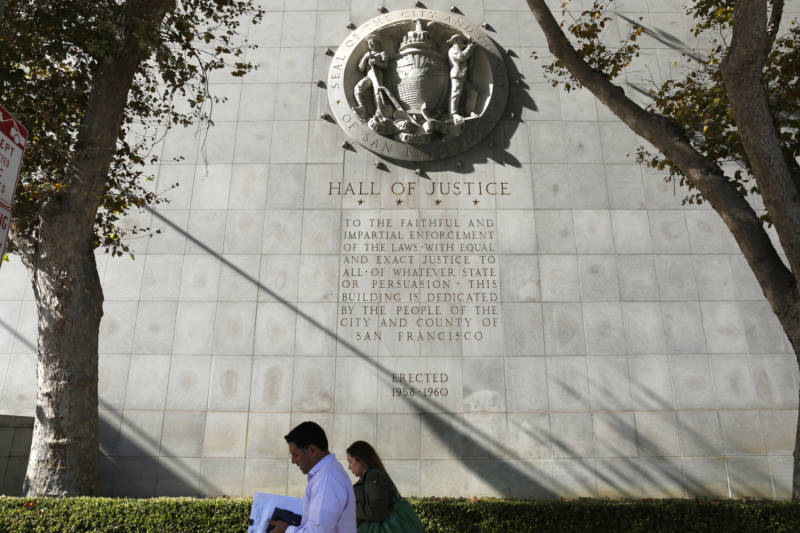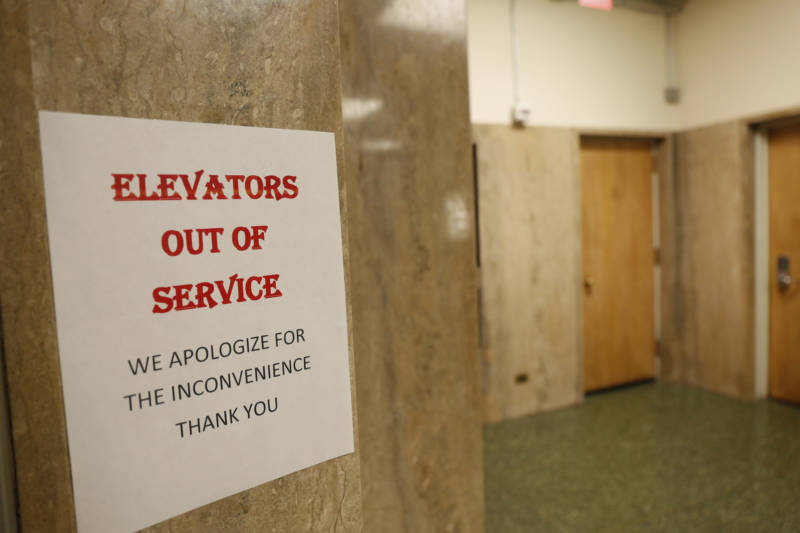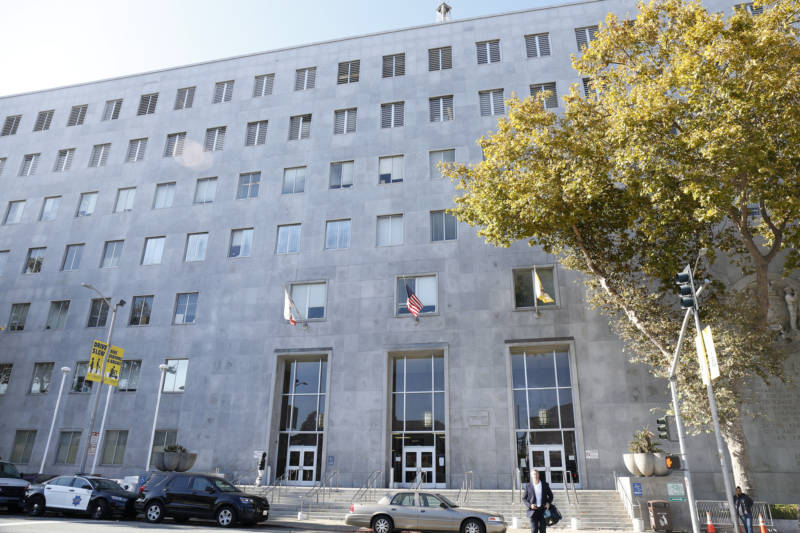San Francisco Mayor London Breed on Thursday announced a plan to shut down the county jail on Bryant Street within two years and relocate its roughly 300 inmates.
The order follows years of warnings that the structure could crumble in a major earthquake.
“It is one of the most inhumane facilities that we have,” Breed said. “At this point we need to get everyone out of there.”
Under Breed’s order, inmates in County Jail 4, located on the top floor of the dilapidated Hall of Justice building, must be moved by July 2021, the same deadline set for hundreds of staffers in the building.
The crumbling edifice, which houses a host of criminal justice offices — including those of the district attorney, public defender and county sheriff — was first declared seismically unsafe in the 1990s. For years, city officials have been trying to wind down operations there.

But until now, no firm deadline has been set for relocating inmates in the jail.
Breed said the city is still figuring out where the inmates will be moved and how to pay for it. Among the multiple options floated is to send some inmates to out-of-county facilities.
Breed’s plan was challenged at a hearing of the Board of Supervisors on Friday, with some city leaders expressing skepticism about how the move would actually transpire by the stated deadline.
“We still do not have any details about how this is going to happen,” said Supervisor Matt Haney. “We don’t know where people are going to go and when. We don’t know how much it’s going to cost. We don’t know what our options are as a policy making body.”
San Francisco Sheriff Vicki Hennessy joined the chorus of criticism, saying the city needed to build a new jail, not send inmates outside the county. Doing so, she said, would be “a horrible plan because it separates people from their families, from their legal council and their support groups.”
In late 2015, supervisors voted down a costly plan to build a new jail, forgoing an $80 million grant from the state.

The city hopes to demolish much of the current Hall of Justice building by 2025 and replace it with a consolidated “justice center” focused more on rehabilitation services.
In addition to seismic concerns, the current building, constructed in 1958, has also had frequent maintenance issues in recent years, including sewage leaks.
Breed said approaches to criminal justice have changed dramatically since the jail first opened: Back in the 1950s, 1960s and 1970s, she said, “we would just build facilities and incarcerate people without the prospect of rehabilitation or change.”
Now, she added, she wants to build “a hall of justice that represents how we are today.”
KQED’s Holly McDede contributed reporting.
